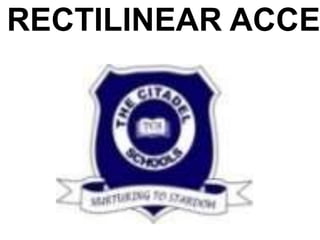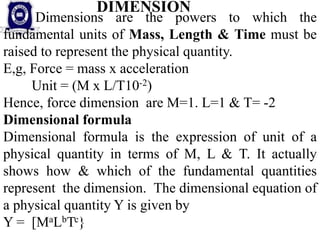This document discusses rectilinear acceleration and defines key concepts related to forces and friction. It defines acceleration, uniform and non-uniform acceleration, and deceleration. It describes two types of forces - contact forces and non-contact forces. It further discusses friction, the different types of friction, and factors that affect friction. Finally, it outlines the laws of solid friction and provides examples of dimensional analysis.











